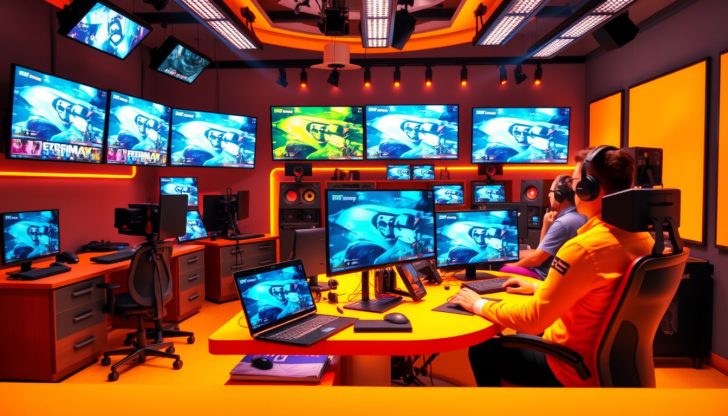Behind the Screens: The Art and Science of Esports Production Unveiled

Esports grows fast. Its production holds a key role in how fans watch the sport. Live events show clear order. Tech in broadcasts makes the game feel real. Production mixes art, tech skills, and smart plans. This text shows the main parts that shape esports production and its role in making deep viewer experiences.

The Structure of Esports Events
Esports events are planned in clear steps. Teams build tournaments and league rules that guide players and fans. These plans keep the play fair and the events smooth.
Tailored Event Management
Event management runs small local matches and large world contests. Companies such as Skillshot Media help both new and well-known publishers with plans that bring fans closer using unique setups (Source: Skillshot Media).
Competitor Support
For top players, production groups take care of travel, lodging, and meals. This help lets players focus on their game without extra worry.
The Art of Broadcasting
Esports production does not only build events; it also makes lively broadcasts for many viewers. Companies like Pixotope push new broadcast changes by using virtual and augmented reality. This use of tech changes how the game appears.
Real-Time Graphics and Visuals
Teams use tools like Unreal Engine to bring clear graphics and rich worlds to live matches. Real-time light effects and smart camera moves add to a sound and picture show that grabs fans (Source: Pixotope).
Interactive Elements
Live broadcasts may include parts that let fans join the play. Screens can show player numbers in real time or mimic game scenes. These parts give fans more details on the match (Source: Pixotope).
Education and Skill Development
As esports grows, schools start programs to train new experts. Camden County College runs studies that ready students for careers in esports. The courses cover work in media edits and explain how esports affects society (Source: Camden County College).
Practical Training
Courses let students work with live events and digital media creation. Through class projects and internships, they pick up techniques that fit the needs of esports event work and media production.
The Future of Esports Production
Esports changes as new tech and fresh fan ideas guide it. The field uses state-of-art tools and clear thoughts on audience needs to shape future shows.
Growth Potential
Estimates suggest esports may grow past $1.8 billion. With more fans watching, production teams and staff will find more ways to meet viewer expectations.
Conclusion
Art and science work side by side in esports production to shape a rich view for fans. With new broadcast work, strong event planning, and schools that train new experts, esports remains at the core of a live field. Looking ahead, the field is set for tasks that may change game-watching. Whether by new tech, active live events, or clear player help, the esports world stands ready for fresh changes in how we see play.
